Tea in Rosemary Verey’s garden at Barnsley House
Elton John worked with her on his garden. Prince Charles too. I’m sure everyone who knows anything about garden design or English gardens knows of the late Rosemary Verey. But I confess I knew nothing of her when I visited the famous designer and author’s former home at Barnsley House and the garden she made famous.
I visited in mid-June with my family, first for afternoon tea and then a garden stroll, accompanied by author Victoria Summerley of Tales from Awkward Hill, whose own Cotswolds garden we’d toured earlier in the day, and Michelle Chapman of Veg Plotting. I’d had the pleasure of a visit with both women only a month earlier at Austin Garden Bloggers Fling, and now it was my turn to explore the gardens of their beautiful country.
Verey died in 2001, but her garden lives on thanks to the efforts of its current owners and head gardener hired by Verey herself. Barnsley House was built in 1697, an imposing, gabled former rectory in the Cotswolds village of Barnsley, and today it’s a luxury boutique hotel and restaurant.
Afternoon tea at Barnsley House, Victoria had assured us, would be “the real deal.” We were seated on the stone terrace at the back of the house with a view of the garden. And my god, just look at what they brought us! Scones, cakes, macarons, finger sandwiches, crocks of clotted cream and jam, plus tea of course and champagne for good measure.
We fell on it like wolves. Who knew garden touring could create such an appetite?
Refreshed, we followed Victoria and Michelle into the garden. The garden is open only to guests of Barnsley House, so it isn’t overrun with visitors, but you need only have tea to be considered a guest. And then of course you get scones and cake too.
As I’ve read, Verey, who discovered a passion and talent for gardening in her middle age, revived the use of formal structure, including topiary to direct the eye along axes and hedging to define garden rooms, while planting more loosely and exuberantly than was the style at the time. This classical temple and lily pond make a pleasant garden room…
…and also draw you in as a strong focal point along a long, grassy pathway coming in from this angle.
Turquoise and eggplant make one of my favorite unexpected color combos in my own garden (think purple oxalis in a turquoise pot), so this combo of rich purple clematis and wedgewood blue caught my eye for color alone.
It’s very romantic also.
Hardy geranium, perhaps ‘Ann Folkard’, also twines around the gate.
Walking along the long, grassy path, I paused to admire the view toward the house, with cupcake-shaped shrubs lining a narrow path and a variegated giant dogwood (I think) in the foreground.
Silver dollar plant was glowing in the afternoon sunlight, allowing an x-ray-like view of seeds inside.
Pink astrantia, one of the plants I long to be able to grow, was beautiful too.
Sigh, I love this so much.
Different plant? Update: It’s been ID’d as Thalictrum.
And in lavender
I like these rustic twig tuteurs.
Along a rose-festooned stone wall, we came across a photo shoot, where a spectrally thin, pale model was posing as if enraptured.
Well, who wouldn’t be?
At the other end of the grassy path, far opposite the classical temple, you discover a charming fountain by sculptor Simon Verity of two spouting frogs and a stone carving of embracing horses? Cotswold rams. This is all lovely surrounded by shade-loving plants in hues of green and gold.
Froggy
The most famous feature of Verey’s garden was the laburnum walk, a trellis tunnel dripping with golden laburnum blossoms in springtime, underplanted with sparklers of purple allium. After a 50-year run, the laburnums had grown old and weak, and the head gardener rooted them out in 2015. Set in a beach-pebble path, a simple stone pillar, the tunnel’s focal point, is all that remains. The laburnum has been replanted (I didn’t even notice it during our visit, but of course it wouldn’t have been blooming in midsummer), and perhaps it’ll be looking good again by next spring.
There’s also a lime walk — a stone path lined with pleached lime trees.
Yew hedge doorway
Shade garden
Mossy stone pillars
And long vistas along grassy paths
To reach Verey’s potager — a formally and decoratively designed vegetable garden — you must exit the main garden and cross a cowpath. Charming gardener statues stand at either side of a frilly iron gate.
We entered the potager, and then, as if on cue…
…cows with full udders came ambling down the lane. Hello, Bossy!
In the potager, neat rows of herbs and columnar trees create structure, although it all seemed a bit tight to my Western eyes. I had trouble seeing the overall garden for all the plants.
Purple artichoke flower buds look pretty against golden foliage.
A foursquare of fruit trees with low hedging and flowers
A friendly scarecrow and purple-flowering perennials including foxglove
Living willow tuteur
Spiny-leaved eryngium, one of my favorites
Ah, we found you again!
It was getting late, so we walked back across the cowpath and past gates leading to guest rooms.
I stopped to admire this detail: a freestanding, decoratively clipped hedge backing a simple bench.
We walked through the cupcake shrubs…
…and around the side of the house to see the knot garden…
…and admire the old house itself.
A Gothic summerhouse overlooking a lawn is surely tailor-made for croquet or, these days, weddings.
That inviting double chaise longue couldn’t be passed up.
We had a wonderful time seeing the garden and enjoying our first real English tea.
And of course spending time with our English friends, Michelle and Victoria! Thanks for the tour-guiding and lovely company, ladies!
Rosemary Verey popularized English country revivalist style in the 1980s and ’90s, but that’s fallen out of favor with the ascendance of the New Perennial Movement (think Piet Oudolf’s gardens). Still, her garden continues to flourish and inspire visitors.
Coming up next: Part 1 of my visit to Sissinghurst Castle Garden. For a look back at nursery shopping at Burford Garden Company, click here.
I welcome your comments; please scroll to the end of this post to leave one. If you’re reading this in a subscription email, click here to visit Digging and find the comment box at the end of each post.
_______________________
Digging Deeper: News and Upcoming Events
Join the mailing list for Garden Spark Talks! Inspired by the idea of house concerts, I’m hosting a series of garden talks by inspiring designers and authors out of my home. Talks are limited-attendance events and generally sell out within just a few days, so join the Garden Spark email list for early notifications. Simply click this link and ask to be added.
All material © 2006-2018 by Pam Penick for Digging. Unauthorized reproduction prohibited.







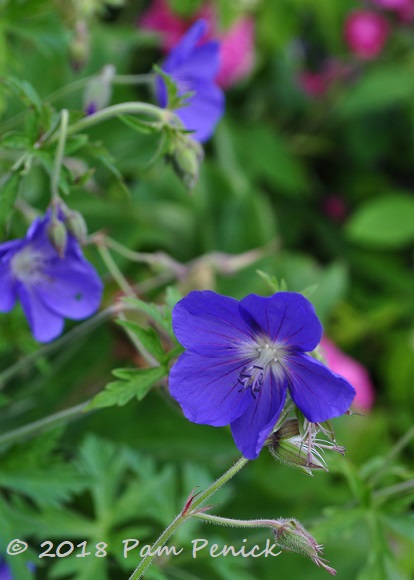









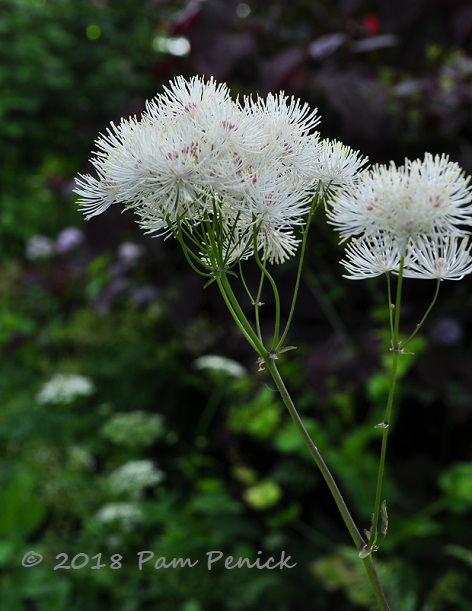
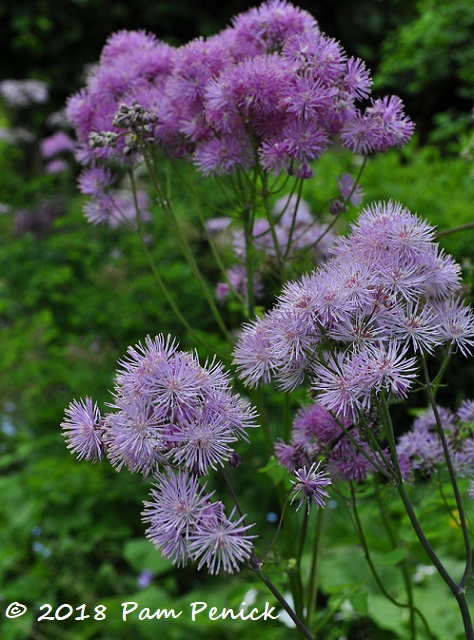

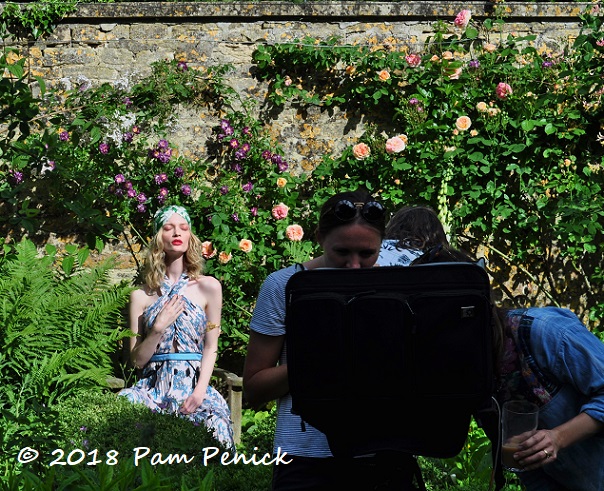
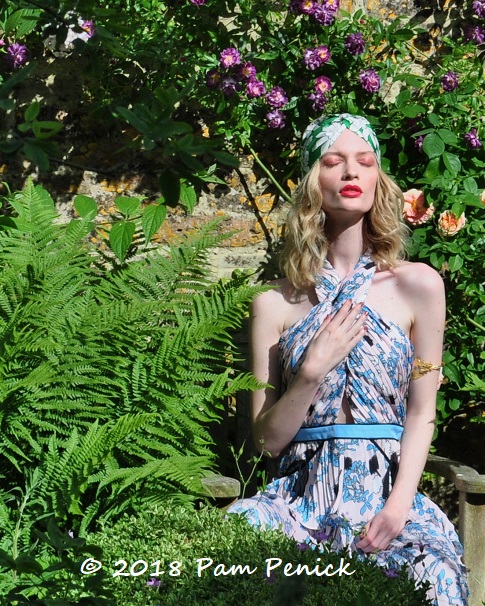
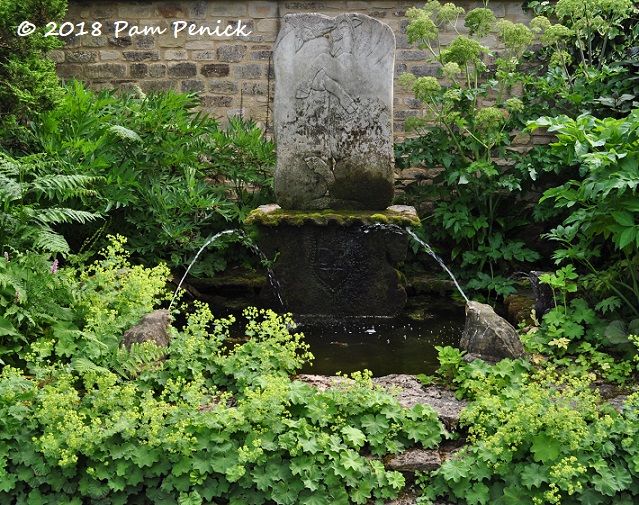











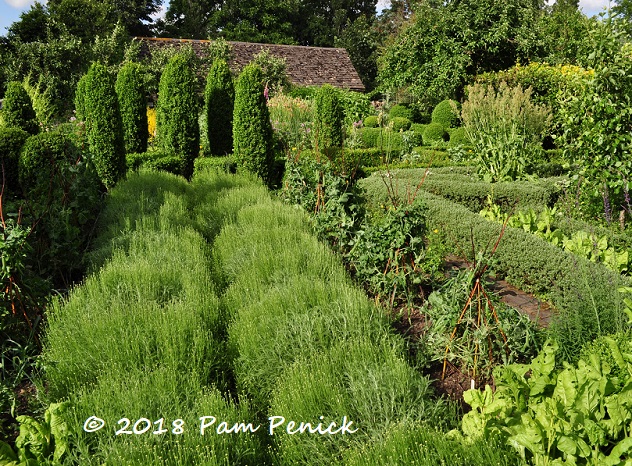


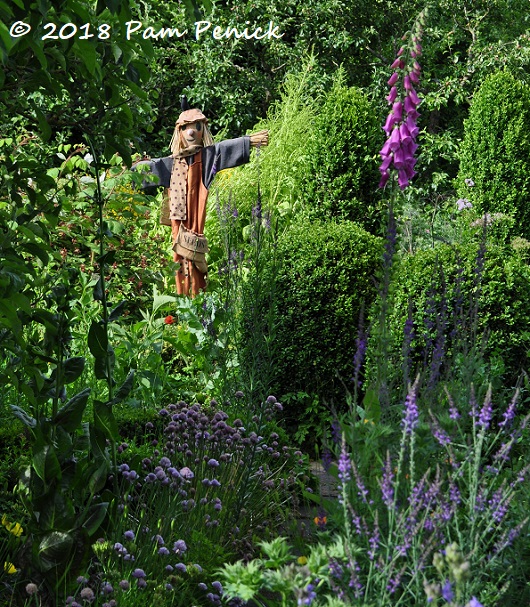

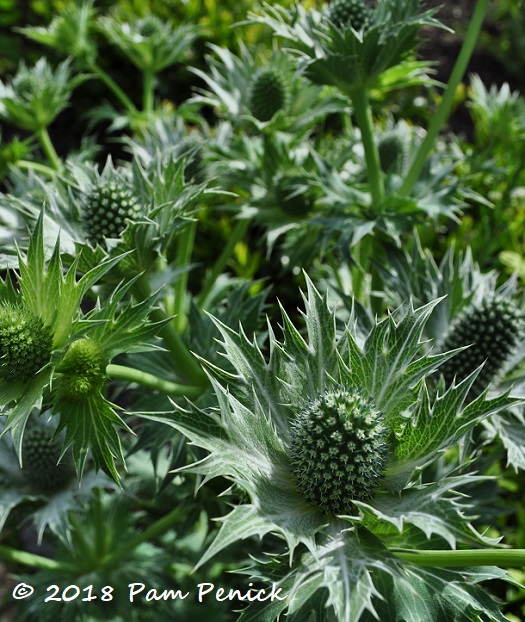




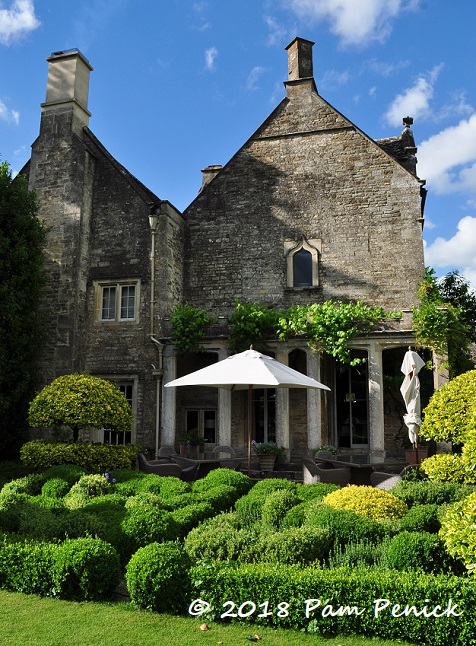






That tea looks delicious! And the garden tour via your photos was wonderful. I wonder if the silver dollar plant was the one named after Rosemary Verey. There’s one with mottled purple leaves called Lunaria annua ‘Rosemary Verey.’ I think the purple and white puffball flowers are Thalictrum, hard to tell exactly which one without seeing the foliage.
Thanks for the IDs, Alison. Thalictrum — I should have remembered that one! And one would think they would definitely be growing all plants named for Rosemary.
Another garden that I have on my list to visit — thanks for the wonderful photo tour!
My pleasure, Lisa!
Rosemary Verey’s books were among the first I collected. Her planting style and mine have long since diverged but I still appreciate the role she and other English gardeners played in sucking me into the world of gardening. Thanks for sharing your photos of her garden. I must find purple artichokes to plant next year…
It’s interesting to hear that you came at gardening in your hot, dry climate by reading her books, Kris. Did that ever create a longing for the kind of garden you can’t really have in L.A.? It goes to show, though, that a passion for gardening is always interesting, even if the writer’s climate doesn’t correspond to one’s own.
What an absolute feast for the eyes! I keep going back to the photos and imagining the time and effort it must have taken to build all this. I love the pond with the frog fountain the most, I think. I have idea for a walk similar to this one but with lilacs instead. Thanks for sharing these wonderful pictures.
A lilac walk sounds stunning — great idea! I’m glad you enjoyed the pics, Jeanne. Thanks for your comment.
Pam, you’d probably enjoy the 1995 book Rosemary Verey’s Making of a Garden, which is a detailed tour of each section and a recounting of when and how each was developed, with outstanding photos by Tony Lord. He had the kind of access over several years that allows for perfect shots: unmarred snow, autumn evenings, early-morning dewy borders. Most sections are shown in different seasons, including that delightful frog fountain. (Those are Cotswold rams carved on the vertical stone, by the way.)
The croquet reference made me smile: there’s a riveting shot across that lawn, taken in early winter with frost over everything, in which a lone wicket is clearly visible. Lord might have been tempted to remove it, but the frost made that impossible.
Thanks to the book and now your post I feel as if I’ve visited Barnsley House. What a great tour you all have done! Thanks for sharing it with us.
Nell, thanks for the helpful correction about the rams on the fountain stone. And for your recommendation about the book. It sounds interesting. I’ll add it to my list.
Verey’s books were among the first I ever bought. I used to buy a lot of UK mags so knew all about those gardens and gardeners long before I had much of a garden of my own. I remember being enthralled by a photo of a table in her house whose surface was covered with pods, seed heads. big dried leaves and all manner of natural items. It inspired me to start my own collection. Loving your tour.
It’s so interesting to see how the gardening bug bit for my gardening friends.
I must say I really like that green hedge backdrop for the big bench. I like her garden. I don’t think it is out of favor with everyone. I am not a Piet devotee. I like some parts of his designs but I couldn’t live with a garden totally devoted to his design. That is some tea. Makes me hungry just looking at the pictures.
Wow, heresy about Piet’s style of gardens? 🙂 Do tell, Lisa. What don’t you like about them?
Enjoying your UK garden tours. Love this style of garden, though I love Oudolf’s as well–anything with plants well grown to their full glorious potential makes me happy.
A beautiful garden is a beautiful garden. I enjoy all kinds too. Thanks for your comment, HB.
Oh my, wonderful tea and a fabulous garden tour. Who could ask for anything more? I’ve read several of Verey’s books and loved watching her on television. A story that still makes me smile comes from her visit to the PNW garden of writer Ann Lovejoy, who did all of her own gardening. “When does the staff arrive?” In the kitchen, near the door that leads out to the garden hangs a sign that says, “This is what happens when you fire all of the servants” which reminds me of MS Verey everytime I see it.
Oh my gosh, please tell me her query was tongue-in-cheek. That sounds so very upper-crust British, doesn’t it? 🙂